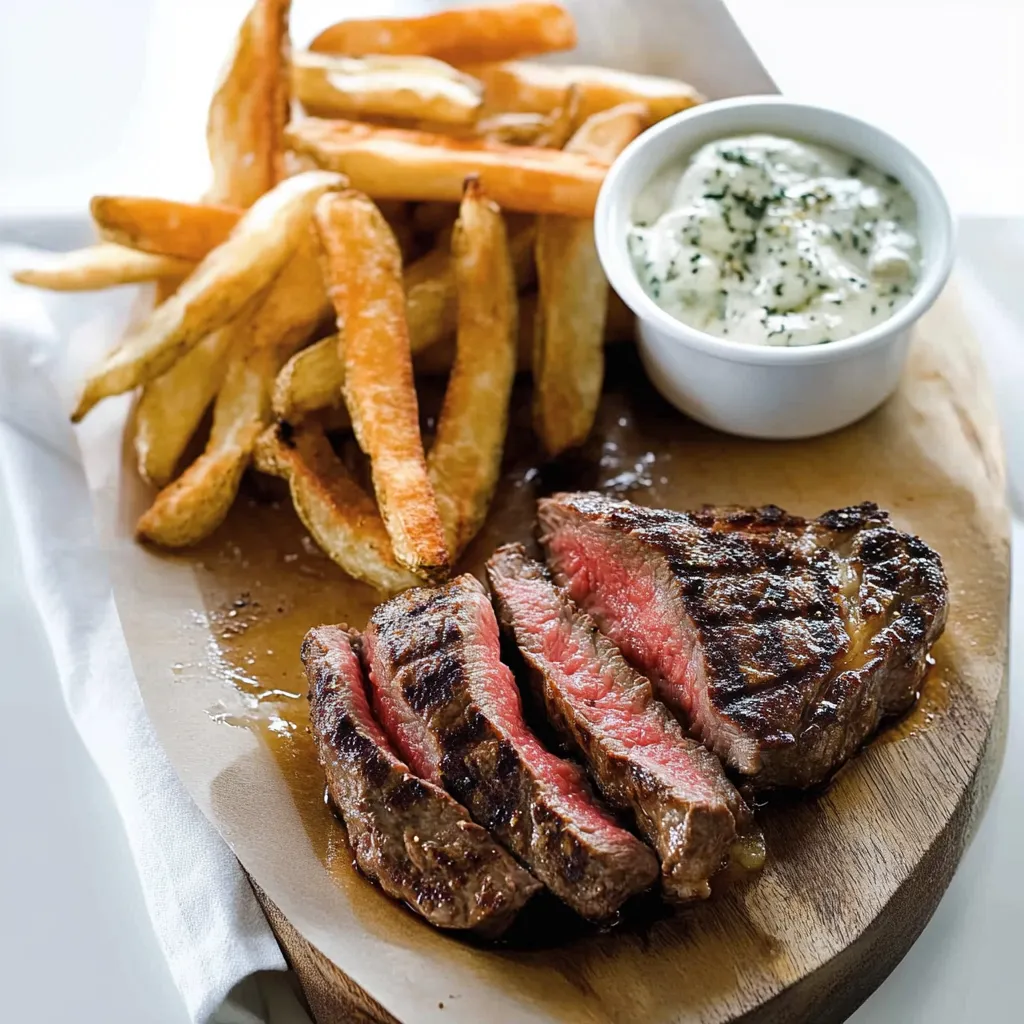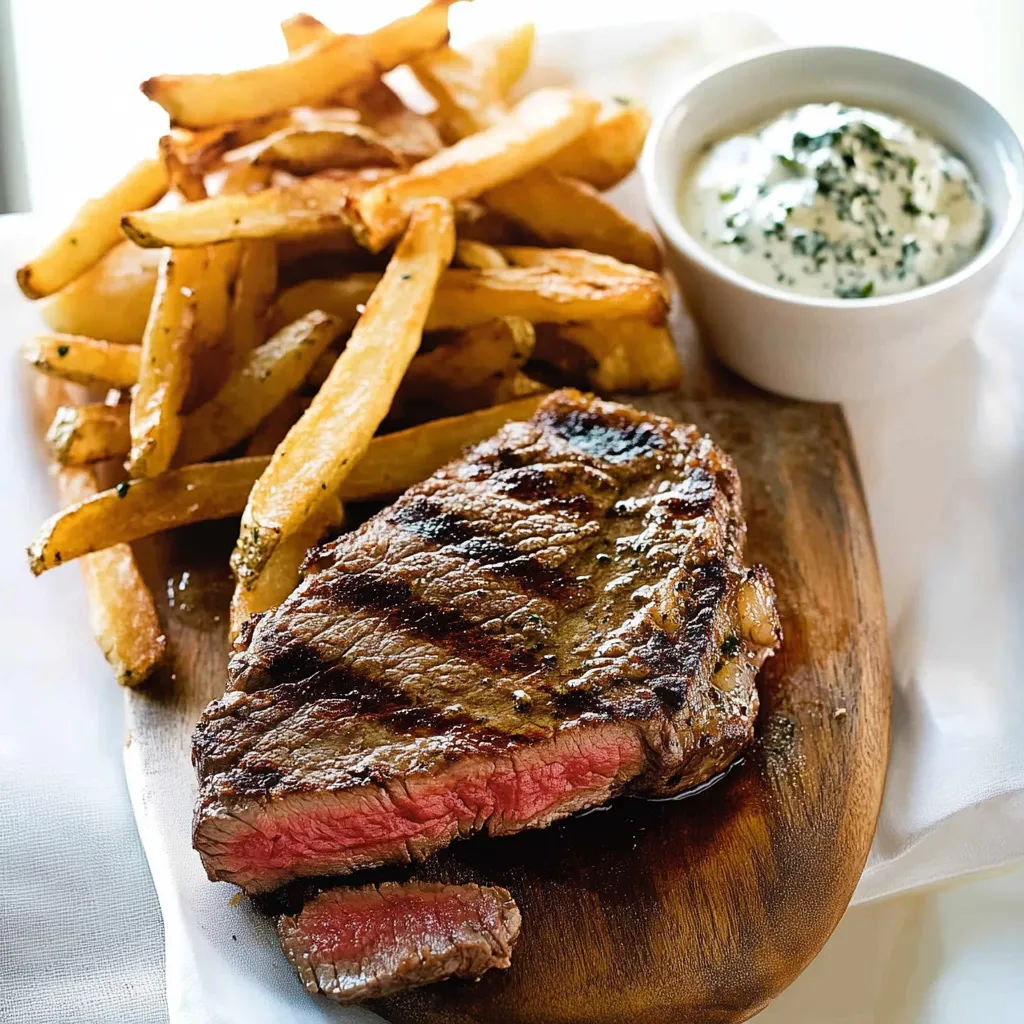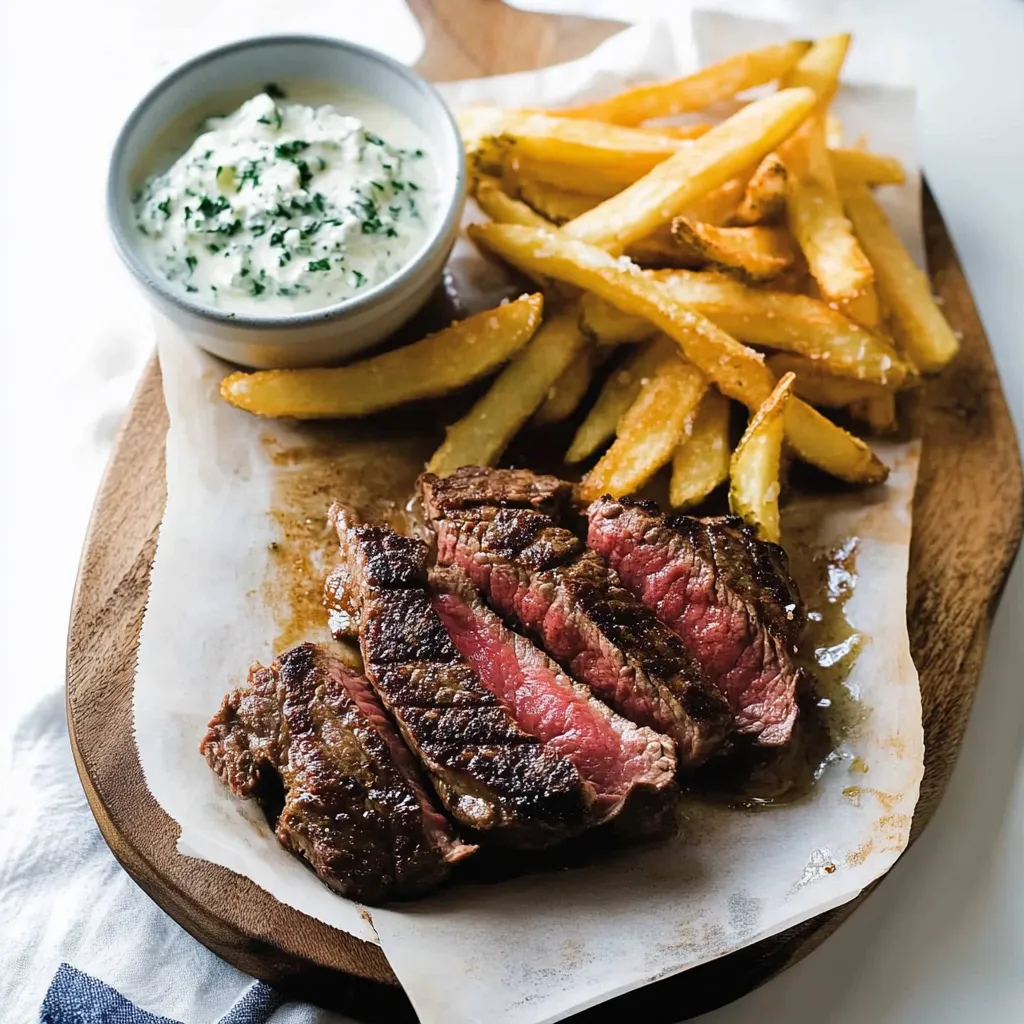 Pin it
Pin it
Steak Frites is the epitome of French bistro comfort food - a perfectly seared steak paired with crispy, golden frites and elevated with a luxurious lemon-herb compound butter. This restaurant-worthy dish transforms an ordinary dinner into a memorable dining experience right in your own kitchen.
After perfecting this recipe over countless family dinners, I've found that letting the steak rest while giving the frites their final fry creates the perfect timing for serving everything hot and fresh.
Essential Ingredients
- High-quality steak (strip sirloin, ribeye, or filet mignon) : Choose well-marbled cuts at least 1-inch thick for the best flavor and texture
- Russet potatoes : Their high starch content delivers that perfect crispy exterior and fluffy interior
- Fresh herbs (rosemary, thyme, green onions) : Essential for creating an aromatic compound butter that elevates the entire dish
- Unsalted butter : Gives you complete control over seasoning while creating a luxurious finish
- High-smoke-point oil : Avocado or grapeseed oil ensures perfect searing without burning
Detailed Instructions
- Step 1: Preparing the Compound Butter
- Start by softening butter at room temperature for 30 minutes. Whip butter until light and fluffy, about 5-7 minutes. Fold in finely chopped herbs, minced garlic, lemon zest, and juice. Season with sea salt and freshly ground pepper. Roll into a log using parchment paper and chill.
- Step 2: Creating Perfect Frites
- Cut potatoes into uniform ¼-inch batons. Soak in cold water for 30 minutes to remove excess starch. Drain thoroughly and pat completely dry. First fry at 300°F for exactly 3 minutes until tender but barely colored. Rest while preparing steak. Final fry at 350°F for 3 minutes until golden and crispy.
- Step 3: Mastering the Steak
- Bring steak to room temperature for 30 minutes. Pat completely dry and season generously with sea salt and pepper. Heat pan until smoking hot. Sear undisturbed for 3 minutes. Add butter, garlic, and herbs. Flip and baste continuously for 3 minutes. Rest on a warm plate while finishing frites.
 Pin it
Pin it
Growing up in a family that cherished good food, I learned that compound butter transforms any dish. My grandmother would always say that her secret weapon in the kitchen was a good herb butter - it's amazing how such a simple addition can elevate a meal to restaurant quality.
The Art of Temperature
A cast iron skillet is ideal for achieving the perfect crust on your steak. The even heat distribution ensures consistent cooking throughout. Meanwhile, maintaining proper oil temperature for the frites is crucial - too hot and they'll burn, too cool and they'll become greasy.
The Perfect Pairing
While traditional French bistros serve this with a simple green salad, I love adding caramelized shallots for extra depth. The sweetness complements both the savory steak and crispy frites beautifully.
Final thoughts: After years of preparing this dish, I've found that the key to success lies in timing and temperature control. There's something magical about cutting into a perfectly cooked steak and using crusty frites to soak up the flavorful juices. This recipe has become our family's celebration dish, requested for birthdays and special occasions. The joy of serving this restaurant-worthy meal at home never gets old.
 Pin it
Pin it
Frequently Asked Questions
- → What type of potatoes work best for steak frites?
- Russet potatoes are ideal for making frites (French fries) because of their high starch content. They create the perfect crispy exterior while maintaining a fluffy interior when double-fried.
- → Why do you need to double-fry the potatoes?
- Double-frying creates the perfect French fry. The first fry at a lower temperature cooks the interior, while the second fry at a higher temperature creates that crispy golden exterior.
- → Can I prepare the herb butter ahead of time?
- Yes! The compound butter can be made several days ahead and stored in the refrigerator. It also freezes well for up to 3 months.
- → What's the best way to get a good sear on the steak?
- Start with a very hot pan and pat the steak dry before seasoning. Press down briefly at the start to ensure good contact, then resist the urge to move it around while cooking.
- → How long should I let the steak rest?
- Let the steak rest for 3-4 minutes before slicing. This allows the juices to redistribute throughout the meat, ensuring a juicier steak.
